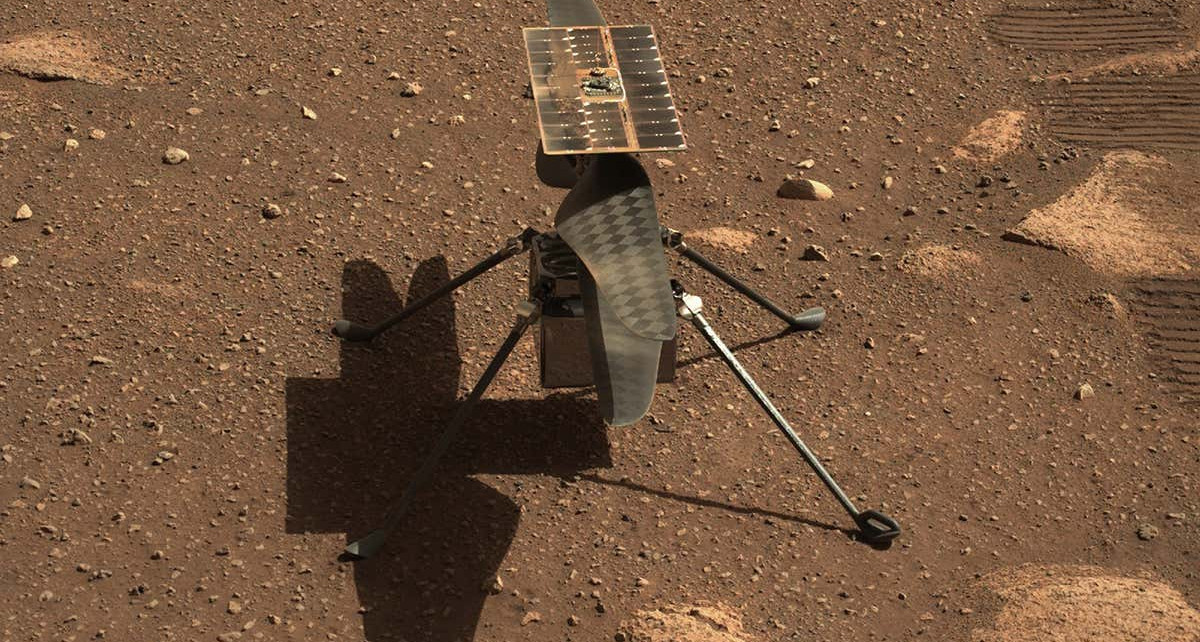[ad_1]

NASA’s Ingenuity Mars helicopter photographed by the Perseverance rover on 5 April
NASA/JPL-Caltech/ASU
The first drone on another world is ready to fly. The Ingenuity helicopter is primed to lift off from the surface of Mars on 12 April, which will be the first powered flight on another planet.
NASA’s Perseverance rover, which launched in July 2020 and arrived on Mars on 18 February, carried the Ingenuity helicopter folded up in its belly. After the rover landed, it dropped Ingenuity onto the ground and drove off so the drone could ready itself for its first flight.
Advertisement
“It has survived launch, it has survived the journey through space, the vacuum and radiation, it has survived the entry and descent and landing onto the surface on the bottom of the Perseverance rover,” said Bob Balaram at NASA’s Jet Propulsion Laboratory (JPL), Ingenuity’s chief engineer, during a 23 March press conference. “Everything we could possibly do on Earth has been done, and now it’s time for us to take that same vehicle to Mars and subject it to the ultimate test.”
Ingenuity stands at about half a metre tall and weighs just 1.8 kilograms. It has two rotors that lift the aircraft by spinning in opposite directions 40 times a second, about five times faster than regular helicopter rotors on Earth.
That speed is partially because of its small size, but partially because it is far harder to fly in the thin Martian atmosphere, which is about 100 times thinner than Earth’s. The drone is a technology demonstration, meant to simply prove that we can make a helicopter fly on Mars, so it doesn’t carry any scientific instruments.
However, the onboard computer that helps it navigate is about 150 times faster than the one on Perseverance and far more powerful than anything we have sent to another planet before, Balaram said. “If you add up all the computers all the way back that have flown out into the solar system and you sum it all up, we dwarf it,” he said.
Such speed is necessary because it takes more than 10 minutes for a signal to travel from Earth to Mars, so Ingenuity will have to fly itself autonomously. The first flight will be relatively simple: the helicopter will fly upward at a rate of about 1 metre per second until it is 3 metres in the air, hover for up to 30 seconds, and descend again. The Perseverance rover will watch from a safe distance, taking images and videos to send back to Earth.
If that first flight goes well, Ingenuity will perform up to four more tests over the following month, flying higher and manoeuvring a bit more acrobatically. After 30 Martian days – 31 Earth days – its mission will be over, and the Perseverance rover will drive off to begin its own science.
In the future, drones like this could help robotic missions and even human explorers scout out their surroundings and probe areas that are difficult or impossible to reach over ground. Ingenuity also serves as a sort of miniature preview for NASA’s Dragonfly mission, a much larger drone that will explore Saturn’s moon Titan, which is scheduled to launch in 2027.
Sign up to our free Launchpad newsletter for a voyage across the galaxy and beyond, every Friday
More on these topics:
[ad_2]
Source link




